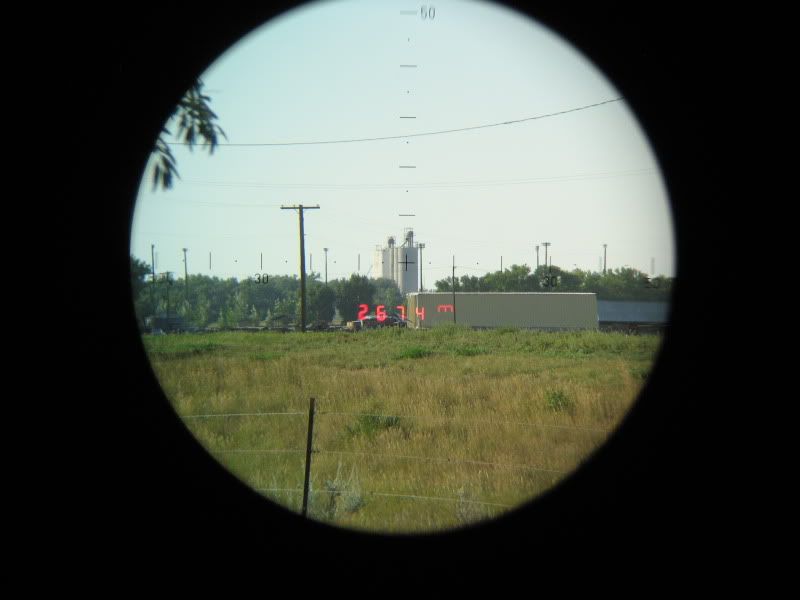I know these are different products, but I was curious if anyone had tested the LRFs against each other. The PLRF-10 claims to have a max range of 2.5km, but some military testing I found showed it was limited to 2km with an albedo of 0.1 (roughly a tree/forest according to wikipedia) on a 2.3m NATO target, under reasonable conditions (2x10^4m visabilitiy). The last 500m required idea conditions, approx. 5x10^4m visability.
LRF Range
The Zeiss reviews I have seen suggest the 1300yd (approx. 1.2km) range is conservative; many have said they could range a tree well past this. However, all the testing I have found on the Zeiss is not very strict like the military testing. No recording of conditions or verifying that the range reported is even correct.
Beam Divergence
Zeiss reports the beam divergence at 1.6x0.5mrad, while the PLRF was tested at 0.4x1.3mrad. This converts to approx. (using 0.3mrad per arcminute) 5x1.5MOA and 1.5x4MOA. Close enough.
Cost
The Zeiss is around $3k and the PLRF-10 is suppose to be around $3.5k (still waiting for a quote).
I am pretty sure the optics in the Zeiss are better than the PLRF and the LRF in the PLRF is better than the Zeiss, but by how much? Manufacturer specs are one thing, real world testing is another. No idea on the glass quality though.
I shoot out to 2000yrds give or take. Anyone tests the Zeiss at this range?
LRF Range
The Zeiss reviews I have seen suggest the 1300yd (approx. 1.2km) range is conservative; many have said they could range a tree well past this. However, all the testing I have found on the Zeiss is not very strict like the military testing. No recording of conditions or verifying that the range reported is even correct.
Beam Divergence
Zeiss reports the beam divergence at 1.6x0.5mrad, while the PLRF was tested at 0.4x1.3mrad. This converts to approx. (using 0.3mrad per arcminute) 5x1.5MOA and 1.5x4MOA. Close enough.
Cost
The Zeiss is around $3k and the PLRF-10 is suppose to be around $3.5k (still waiting for a quote).
I am pretty sure the optics in the Zeiss are better than the PLRF and the LRF in the PLRF is better than the Zeiss, but by how much? Manufacturer specs are one thing, real world testing is another. No idea on the glass quality though.
I shoot out to 2000yrds give or take. Anyone tests the Zeiss at this range?



